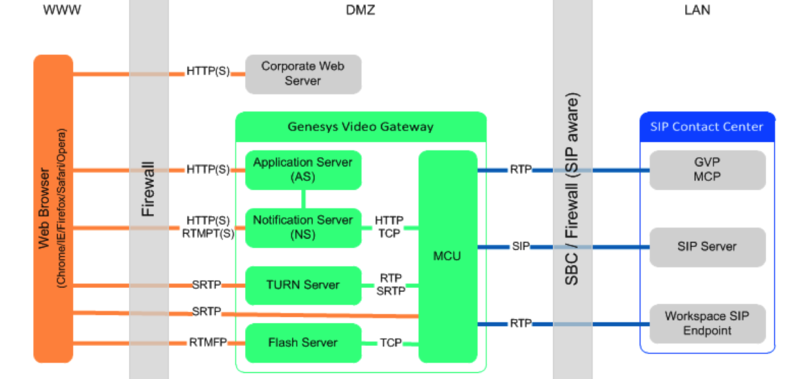Architecture
The following diagram shows WebRTC and Flash clients connecting first to the Collaboration Application Server (AS) within the platform. Following authentication by the AS's Central Login Service, the clients move to an available Collaboration MCU where they can send and receive signaling messages and connect to voice and video sessions. SIP clients can SIP call directly into an MCU.
Media flows directly between client and server where possible, using a range of UDP ports, or if more restricted access is required, the call can be relayed over TURN on a single UDP/TCP port (for WebRTC) or tunneled via HTTPS (for Flash).
This page was last edited on April 27, 2018, at 03:08.
Comments or questions about this documentation? Contact us for support!

